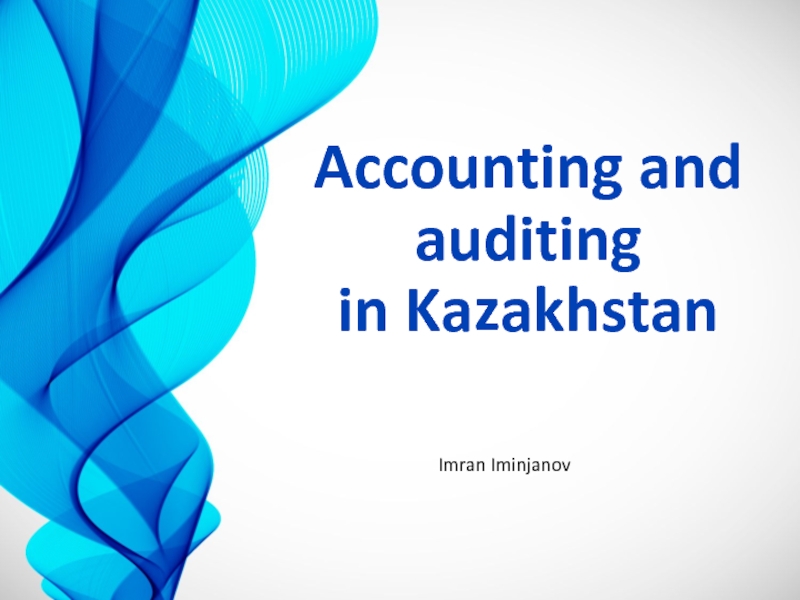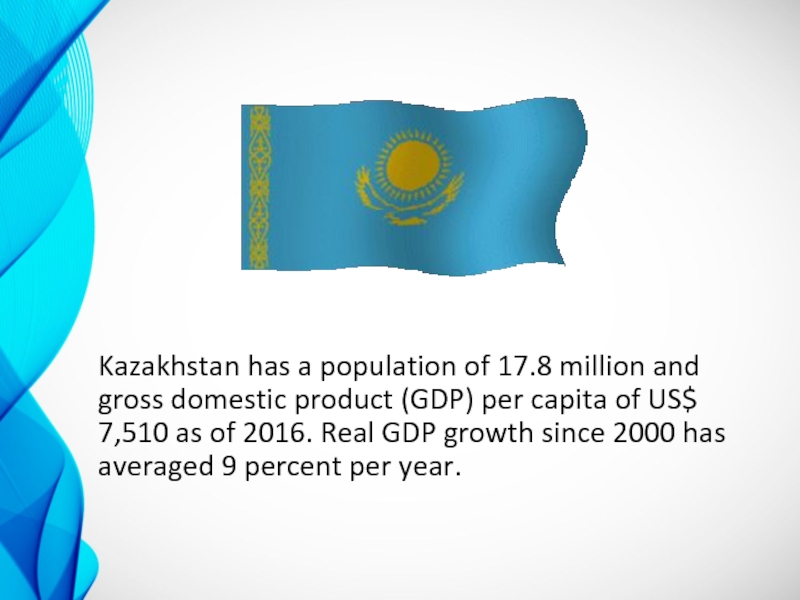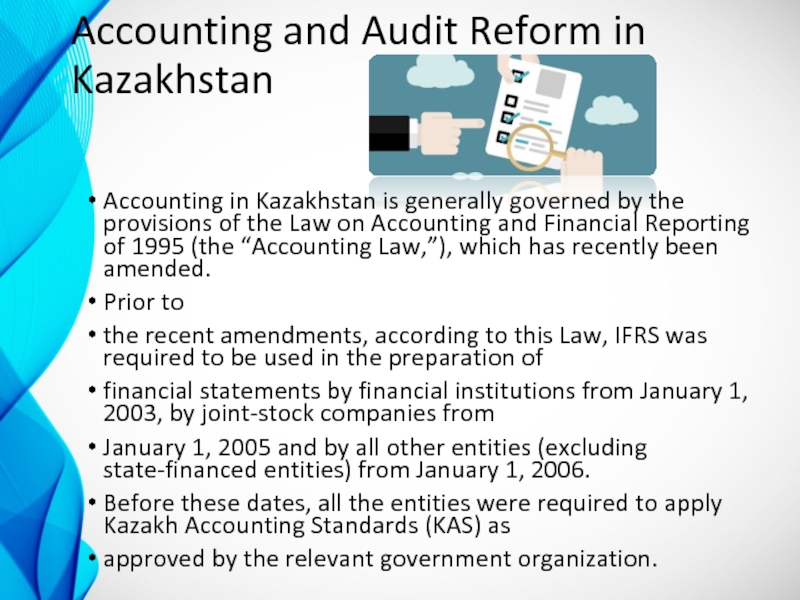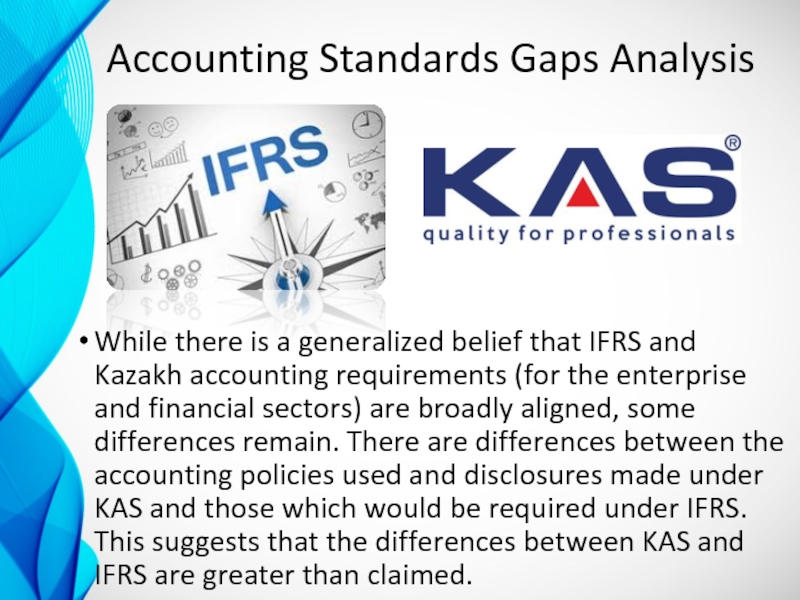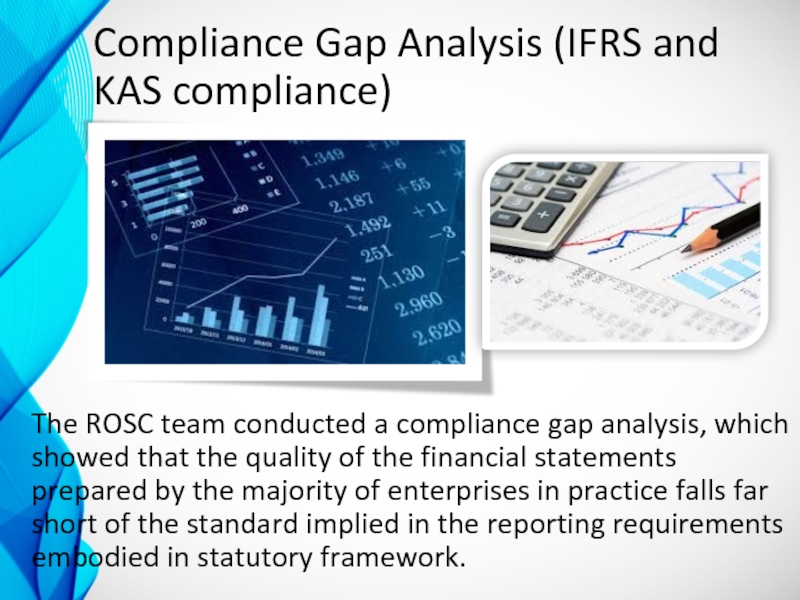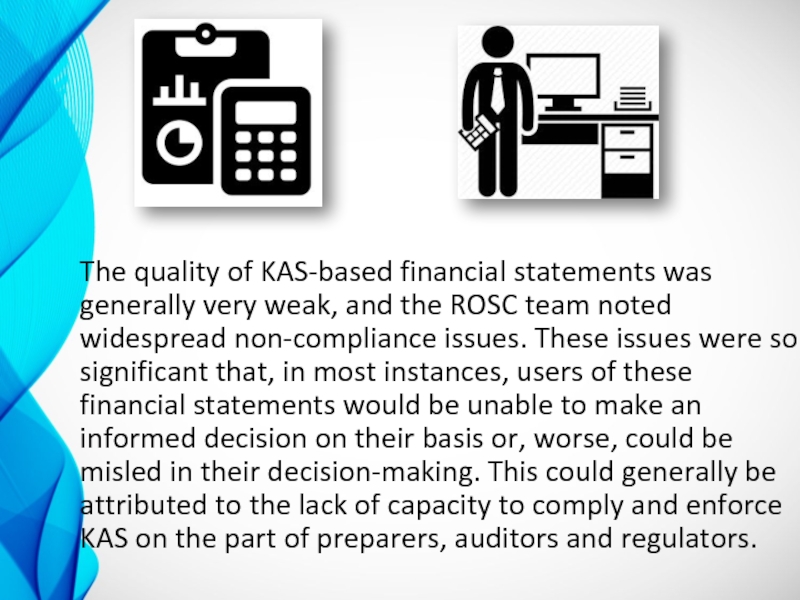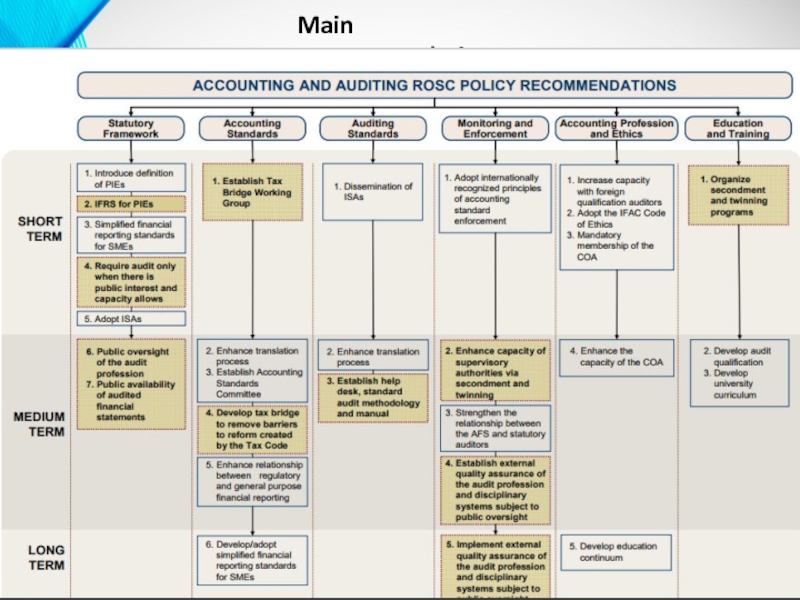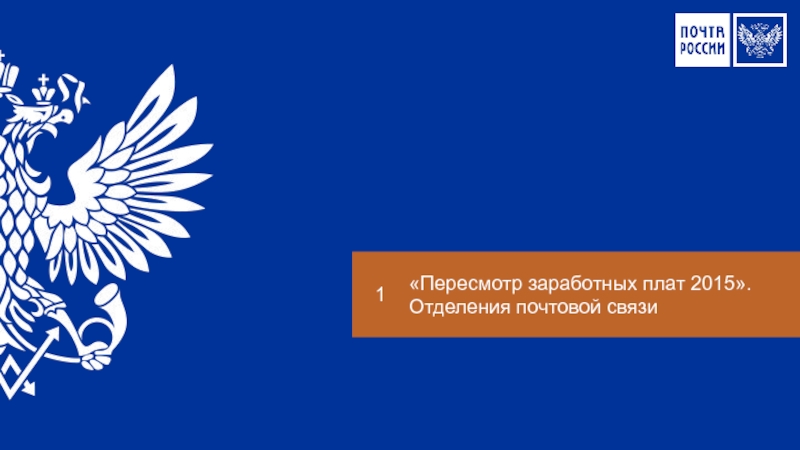- Главная
- Разное
- Дизайн
- Бизнес и предпринимательство
- Аналитика
- Образование
- Развлечения
- Красота и здоровье
- Финансы
- Государство
- Путешествия
- Спорт
- Недвижимость
- Армия
- Графика
- Культурология
- Еда и кулинария
- Лингвистика
- Английский язык
- Астрономия
- Алгебра
- Биология
- География
- Детские презентации
- Информатика
- История
- Литература
- Маркетинг
- Математика
- Медицина
- Менеджмент
- Музыка
- МХК
- Немецкий язык
- ОБЖ
- Обществознание
- Окружающий мир
- Педагогика
- Русский язык
- Технология
- Физика
- Философия
- Химия
- Шаблоны, картинки для презентаций
- Экология
- Экономика
- Юриспруденция
Accounting and Auditing in Kazakhstan презентация
Содержание
- 1. Accounting and Auditing in Kazakhstan
- 2. Kazakhstan has a population of 17.8 million
- 3. Accounting and Audit Reform in Kazakhstan
- 4. The Accounting and Audit Profession The
- 5. Monitoring and Enforcement The Agency for Financial
- 6. Accounting Standards Gaps Analysis While there
- 7. Compliance Gap Analysis (IFRS and KAS compliance)
- 8. Audited IFRS financial statements generally appeared to
- 9. The quality of KAS-based financial statements was
- 10. Main Recommendations
- 11. THANK YOU FOR YOUR ATTENTION!
Слайд 2Kazakhstan has a population of 17.8 million and gross domestic product
(GDP) per capita of US$ 7,510 as of 2016. Real GDP growth since 2000 has averaged 9 percent per year.
Слайд 3Accounting and Audit Reform in Kazakhstan
Accounting in Kazakhstan is generally
governed by the provisions of the Law on Accounting and Financial Reporting of 1995 (the “Accounting Law,”), which has recently been amended.
Prior to
the recent amendments, according to this Law, IFRS was required to be used in the preparation of
financial statements by financial institutions from January 1, 2003, by joint-stock companies from
January 1, 2005 and by all other entities (excluding state-financed entities) from January 1, 2006.
Before these dates, all the entities were required to apply Kazakh Accounting Standards (KAS) as
approved by the relevant government organization.
Prior to
the recent amendments, according to this Law, IFRS was required to be used in the preparation of
financial statements by financial institutions from January 1, 2003, by joint-stock companies from
January 1, 2005 and by all other entities (excluding state-financed entities) from January 1, 2006.
Before these dates, all the entities were required to apply Kazakh Accounting Standards (KAS) as
approved by the relevant government organization.
Слайд 4The Accounting and Audit Profession
The Kazakh accounting and audit profession
suffers from a number of weaknesses, which results in a chronic lack of qualified professionals. These weaknesses are rooted in a lack of adequately trained instructors to deliver academic (i.e., at the university and post-graduate level), professional, and continuing professional development (CPD) courses.
Слайд 5Monitoring and Enforcement
The Agency for Financial Supervision (AFS) is responsible for
the supervision and regulation of all regulated markets: the banking sector, the insurance sector, the securities market and pension funds.
Слайд 6Accounting Standards Gaps Analysis
While there is a generalized belief that
IFRS and Kazakh accounting requirements (for the enterprise and financial sectors) are broadly aligned, some differences remain. There are differences between the accounting policies used and disclosures made under KAS and those which would be required under IFRS. This suggests that the differences between KAS and IFRS are greater than claimed.
Слайд 7Compliance Gap Analysis (IFRS and KAS compliance)
The ROSC team conducted
a compliance gap analysis, which showed that the quality of the financial statements prepared by the majority of enterprises in practice falls far short of the standard implied in the reporting requirements embodied in statutory framework.
Слайд 8Audited IFRS financial statements generally appeared to comply with IFRS, but
a number of significant non-compliance issues were noted, leading the ROSC team to question the capacity of preparers and auditors. In addition, regulatory bodies lack the resources to effectively control preparation of financial reports in accordance with IFRS.
Слайд 9The quality of KAS-based financial statements was generally very weak, and
the ROSC team noted widespread non-compliance issues. These issues were so significant that, in most instances, users of these financial statements would be unable to make an informed decision on their basis or, worse, could be misled in their decision-making. This could generally be attributed to the lack of capacity to comply and enforce KAS on the part of preparers, auditors and regulators.
